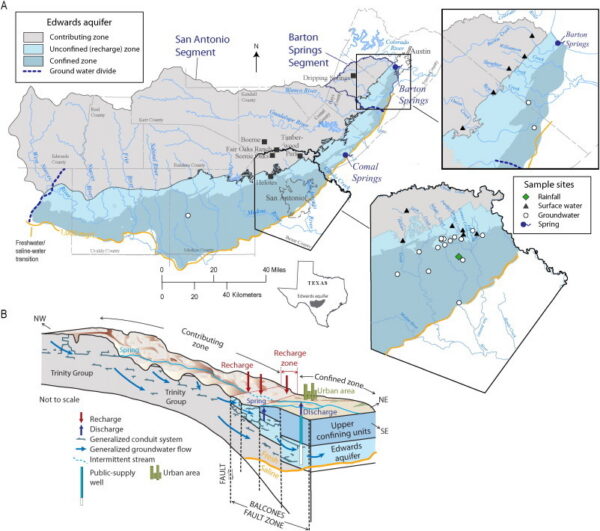
Summary of findings from Musgrove and others, 2016
The Edwards aquifer region is undergoing rapid growth, particularly in urban areas such as San Antonio and Austin. Such growth can increase anthropogenic sources of nitrate to groundwater. Nitrate is an important nutrient but excess concentrations can affect aquifer ecosystems. Additionally, consumption of drinking water with excess nitrate can have health effects (nitrate has a U.S. Environmental Protection Agency primary drinking water standard of 10 milligrams per liter [mg/L]). There are many sources of nitrate and other nutrients in waterâ€â€both natural and anthropogenic. Natural sources include soils, plant decomposition, animal waste, and rain. Anthropogenic sources include fertilizers, sewage, wastewater, and vehicle exhaust. This study investigated sources, variability, and transformation of nitrate in Edwards aquifer groundwater to assess current and future concerns associated with urbanization.
Some key findings are:

The Edwards aquifer (San Antonio segment and Barton Springs segment)

Timeseries (A) showing increasing nitrate concentrations in groundwater discharging from Comal Springs (in the San Antonio segment of the Edwards aquifer) and Barton Springs (in the Barton Springs segment of the Edwards aquifer). Discharge values are daily mean values for USGS stations 08155500 (Barton Springs at Austin, Texas) and 08168710 (Comal Springs at New Braunfels, Texas). Concentrations relative to spring discharge values (B) indicate that increased contributions cannot be attributed to hydrologic conditions.